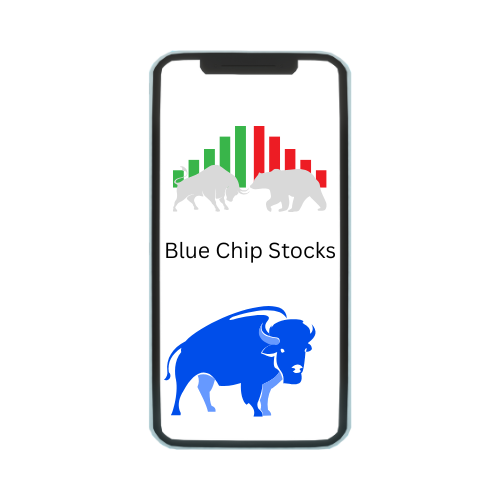The International Monetary Market (IMM) is a global financial platform where participants engage in trading various financial instruments related to currency, interest rates, and other monetary variables. Established in 1972 as a division of the Chicago Mercantile Exchange (CME), the IMM provides a marketplace for hedging, speculating, and arbitraging against fluctuations in foreign exchange rates, interest rates, and other financial indices. Through a range of products, such as futures and options contracts, the IMM facilitates international trade and investment by offering a mechanism for managing currency risk and interest rate exposure. The IMM is integral to the global financial system, allowing businesses and investors to protect themselves against adverse movements in currency values and interest rates, thus promoting stability and efficiency in international finance. By offering standardized contracts and leveraging advanced trading technologies, the IMM helps participants achieve their financial objectives and manage market risks effectively.
What Is the International Monetary Market (IMM)?
The International Monetary Market (IMM) is a specialized financial exchange platform dedicated to trading financial instruments related to global currencies and interest rates. Launched in 1972 as a division of the Chicago Mercantile Exchange (CME), the IMM serves as a pivotal venue for trading futures and options contracts on a range of international monetary instruments. Its primary purpose is to offer a structured and regulated environment where market participants can manage risks associated with currency fluctuations and interest rate changes. By providing a suite of financial products, including currency futures, interest rate futures, and options on these contracts, the IMM allows businesses, investors, and financial institutions to hedge against potential losses, speculate on future market movements, and explore arbitrage opportunities. This market is instrumental for fostering global trade and investment by enabling efficient risk management and price discovery in the international financial system. Through its standardized contracts and advanced trading technologies, the IMM enhances market transparency, liquidity, and efficiency, supporting the stability and growth of the global economy.
Purpose of the International Monetary Market
The International Monetary Market (IMM) serves several essential purposes within the global financial system, each aimed at enhancing market efficiency and stability. Here’s a detailed breakdown of its main objectives:
- Risk Management
The IMM provides financial instruments such as futures and options contracts to help businesses, investors, and financial institutions manage risks associated with fluctuations in currency exchange rates and interest rates. By using these tools, participants can hedge against potential losses from adverse movements in the foreign exchange and interest rate markets, thereby stabilizing their financial positions and ensuring more predictable financial outcomes.
- Price Discovery
One of the fundamental functions of the IMM is to facilitate price discovery for currencies and interest rates. Through open and competitive trading, the IMM helps establish transparent and accurate prices for various financial instruments. This price discovery process reflects the collective market view on future economic conditions, helping participants make informed financial decisions.
- Speculation Opportunities
The IMM offers a platform for speculative trading where investors can take positions based on their expectations of future market movements. Speculators use futures and options contracts to bet on currency and interest rate fluctuations, which can lead to potential profits if their predictions are correct. This speculative activity adds liquidity to the market, making it easier for other participants to buy and sell contracts.
- Arbitrage Opportunities
Arbitrage involves exploiting price discrepancies between different markets or instruments to make a profit. The IMM creates opportunities for arbitrage by offering a diverse range of financial products and enabling traders to capitalize on differences in currency and interest rate prices across different markets. This activity helps align prices across various trading platforms and maintains market efficiency.
- Supporting International Trade and Investment
By providing tools for managing currency and interest rate risks, the IMM supports international trade and investment activities. Companies engaged in global business can use IMM products to hedge against exchange rate fluctuations and interest rate changes, thereby protecting their profit margins and reducing financial uncertainties related to cross-border transactions.
Types of Financial Instruments Traded on the IMM
The International Monetary Market (IMM) offers a variety of financial instruments that cater to different trading needs and strategies. These instruments play crucial roles in managing financial risks, speculating on market movements, and supporting international financial activities. Here’s a detailed overview of the main types of financial instruments traded on the IMM:
- Currency Futures Contracts: These are standardized agreements to buy or sell a specific amount of one currency for another at a predetermined future date and price. Currency futures are used by businesses and investors to hedge against fluctuations in exchange rates or to speculate on future currency movements. They are available for major global currencies such as the Euro, Japanese Yen, British Pound, and Canadian Dollar.
- Currency Options Contracts: Currency options give the holder the right, but not the obligation, to buy or sell a currency pair at a specified price before or on the expiration date. These contracts are used for hedging and speculative purposes, allowing traders to benefit from favorable exchange rate movements while limiting potential losses to the premium paid for the option.
- Interest Rate Futures Contracts: These contracts are agreements to buy or sell a financial instrument based on future interest rates. Common types of interest rate futures include Treasury bond futures and Eurodollar futures. They are used by investors to manage exposure to changes in interest rates and to speculate on future interest rate movements.
- Interest Rate Options Contracts: These options provide the right, but not the obligation, to enter into a future interest rate contract at a set rate. Interest rate options can be used for hedging against interest rate fluctuations or for speculative trading based on interest rate forecasts. They include options on interest rate futures and interest rate caps and floors.
- Forward Contracts: While not always traded directly on the IMM, forward contracts are agreements to exchange currencies at a future date at a rate agreed upon today. They are similar to futures contracts but are customized agreements between two parties. Forward contracts are used to hedge against currency risk in international trade and investments.
Benefits of Trading on the International Monetary Market
Trading on the International Monetary Market (IMM) offers a range of benefits for various market participants, from businesses to individual investors. These benefits stem from the IMM’s role in providing financial instruments for managing risks, exploring market opportunities, and supporting global financial activities. Here’s a detailed look at the advantages of participating in the IMM:
- Effective Risk Management: The IMM offers a variety of financial instruments, such as currency futures, options, and interest rate contracts, which help businesses and investors manage and mitigate risks related to currency fluctuations and interest rate changes. By using these tools, participants can protect themselves against adverse market movements, stabilizing their financial positions and reducing potential losses.
- Price Discovery and Market Transparency: Trading on the IMM facilitates accurate price discovery for currencies, interest rates, and financial indices. The transparent trading environment allows participants to access real-time market prices and information, helping them make informed decisions based on current market conditions and expectations.
- Speculative Opportunities for Profit: The IMM provides numerous opportunities for speculation through futures and options contracts. Traders can take positions based on their expectations of future market movements, aiming to profit from changes in exchange rates, interest rates, and financial indices. This speculative trading adds liquidity to the market and can lead to significant financial gains.
- Diverse Financial Instruments: The IMM offers a broad range of financial products, including currency futures, interest rate futures, and options on financial indices. This diversity allows market participants to choose instruments that best fit their investment strategies, risk tolerance, and financial goals.
- Enhanced Market Liquidity: High trading volumes and a diverse participant base contribute to strong market liquidity on the IMM. Enhanced liquidity means that market participants can execute trades more easily and at more favorable prices, minimizing the impact of their trades on market conditions.
International Monetary Market’s Impact on Global Financial Markets
The International Monetary Market (IMM) exerts significant influence on global financial markets through various mechanisms and effects. Its operations and the financial instruments it offers have wide-ranging impacts that shape market behavior, economic stability, and financial innovation. Here’s a detailed exploration of the IMM’s impact on global financial markets:
- Stabilization of Currency Markets: By providing futures and options contracts for major currencies, the IMM helps stabilize currency markets. Participants use IMM instruments to hedge against exchange rate fluctuations, which can reduce volatility and contribute to more stable currency values across global markets.
- Facilitation of International Trade: The IMM supports international trade by offering tools that manage currency risk for businesses engaged in cross-border transactions. By locking in exchange rates through currency futures or options, companies can mitigate the impact of currency fluctuations on their profit margins and make more accurate financial forecasts.
- Enhancement of Market Liquidity: The IMM increases market liquidity by attracting a diverse range of participants, including speculators, investors, and businesses. High liquidity ensures that financial instruments can be bought and sold easily, which helps to maintain market efficiency and narrow bid-ask spreads.
- Influence on Interest Rates: Interest rate futures and options traded on the IMM can affect expectations about future interest rate movements. By reflecting market sentiments on future interest rates, IMM products can influence central bank policies and broader financial conditions.
- Price Discovery Mechanism: The IMM plays a crucial role in the price discovery process for currencies, interest rates, and financial indices. The transparent trading environment allows for the aggregation of market information and the establishment of fair and accurate prices, which are used as benchmarks in financial markets.
Limitations of the International Monetary Market
While the International Monetary Market (IMM) offers numerous benefits for managing financial risks and facilitating global trade, it also has several limitations that can affect market participants and the broader financial system. Here’s a detailed examination of these limitations:
- Market Volatility: Despite its role in risk management, the IMM itself can experience significant market volatility. Large fluctuations in currency and interest rates can lead to substantial losses for traders and investors, especially during periods of economic uncertainty or geopolitical instability.
- Complexity of Financial Instruments: The financial instruments traded on the IMM, such as futures and options, can be complex and difficult to understand for new or inexperienced market participants. This complexity can lead to misunderstandings and inappropriate use of these tools, potentially resulting in financial losses.
- Counterparty Risk: Although the IMM operates under a regulated framework, there is still some level of counterparty risk associated with trading. If a trading partner fails to meet their contractual obligations, it can lead to financial losses for the other party. However, clearinghouses and margin requirements are in place to mitigate this risk.
- High Transaction Costs: While the IMM aims to offer efficient trading, transaction costs can still be significant. These costs include commissions, spreads, and fees for executing trades, which can reduce the profitability of trading strategies, especially for smaller traders or frequent traders.
- Speculation Risks: The speculative nature of trading on the IMM can lead to high-risk scenarios where traders may make large bets on future market movements. Speculators who make incorrect predictions can suffer significant losses, which can also contribute to market instability.
Conclusion
The International Monetary Market (IMM) stands as a pivotal component of the global financial system, offering a diverse array of financial instruments designed to manage risks, facilitate international trade, and support speculative activities. Through its range of products such as currency futures, interest rate options, and financial indices, the IMM provides essential tools for businesses and investors to navigate the complexities of international finance. By promoting market liquidity, enabling effective risk management, and contributing to price discovery, the IMM plays a crucial role in stabilizing global financial markets and fostering economic stability. However, it is also important to recognize the inherent limitations of the IMM, including market volatility, the complexity of financial instruments, and potential issues related to counterparty risk and high transaction costs. These challenges underscore the need for market participants to approach IMM trading with a thorough understanding of the products and strategies involved, as well as an awareness of the broader economic and regulatory environment. Despite these limitations, the IMM’s contributions to financial innovation, its role as a benchmark for financial products, and its impact on global investment flows illustrate its significance in shaping financial markets. As the financial landscape continues to evolve, the IMM’s ability to adapt and offer new opportunities will remain central to its effectiveness in meeting the needs of market participants and supporting the global economy.







